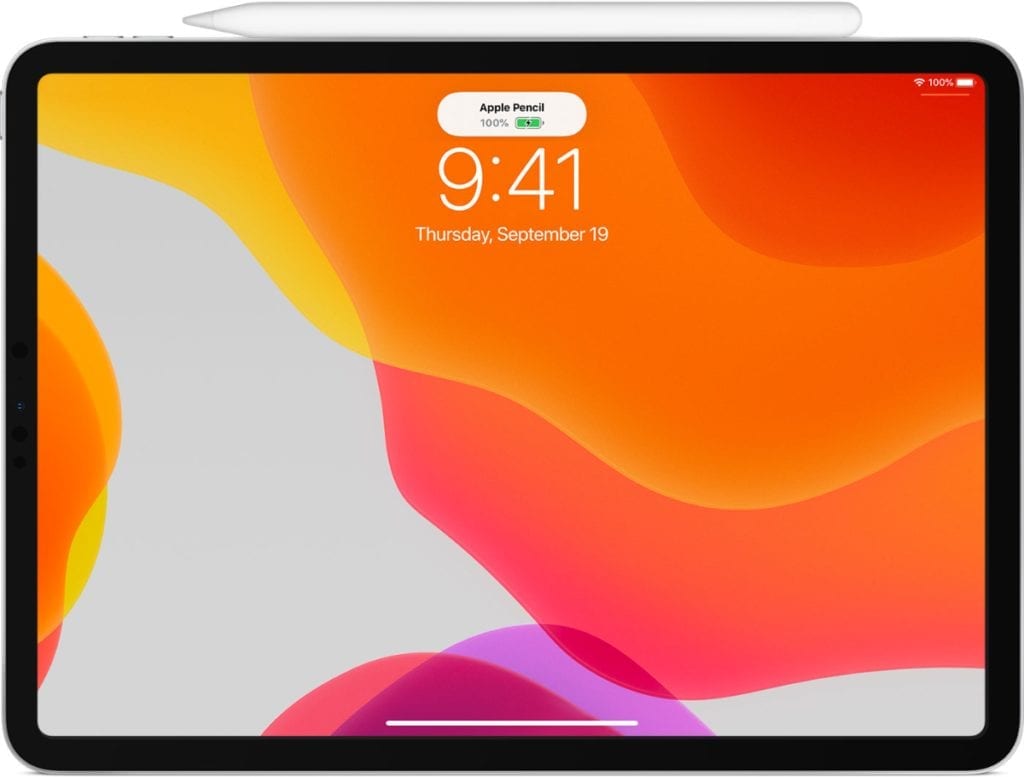Apple has been granted a patent (number 11,061,490) for“capacitive wireless charging systems.” It hints at the ability of future iPads to wireless charge an Apple Pencil.
About the patent
Currently, to charge a second generation Apple Pencil, you must attach it to the magnetic connector at the top center of the tablet. The problem with this is that its easy for the Pencil to get knocked off.
(Plug your Apple Pencil into the Lightning connector on your iPad. You can also charge with a USB Power Adapter by using the Apple Pencil Charging Adapter that came with your Apple Pencil.)
Apple’s idea in the new patent is a wireless power transmitting device (an iPad) wirelessly transmits power to a wireless power receiving device (an Apple Pencil). The receiving device receives the wirelessly transmitted power and uses this power to charge an internal battery and to power components in the receiving device.
Summary of the patent
Here’s the summary of the patent: “A wireless power transmission system may include a wireless power transmitting device such as a tablet computer and a wireless power receiving device such as a computer stylus. A wireless power transmitting capacitor electrode may be formed in the tablet computer. A wireless power receiving capacitor electrode may be formed in the computer stylus. The transmitting capacitor electrode may be driven by a drive signal having a frequency of 900 MHz or greater to produce wireless power.
“The wireless power may be transmitted from the transmitting capacitor electrode to the receiving capacitor electrode on the stylus via near field capacitive coupling. The transmitting and receiving capacitor electrodes may each include conductive traces on dielectric substrates. The conductive traces may follow meandering paths to maximize the possible capacitive coupling efficiency between the capacitor electrodes and thus the end-to-end charging efficiency of the wireless power transmission system.”
Article provided with permission from AppleWorld.Today

